How to brand a football stadium
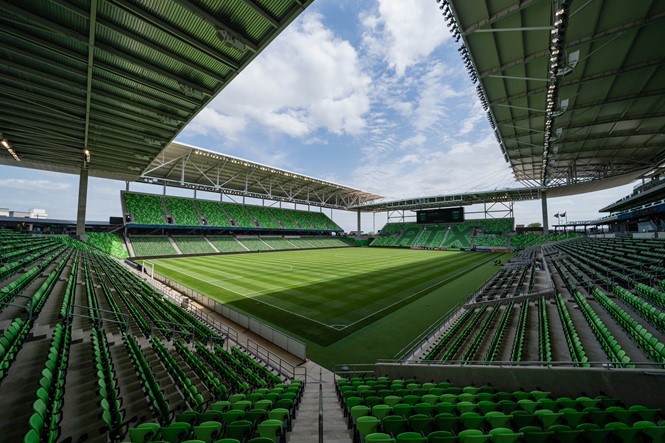
The next generation of sports arenas draw on modern architecture and community heritage to bolster the brand of a national team or club. Jack Cousins discovers how this is achieved.
There are few sights in the world that can evoke a sensation of awe quite like that of visiting a football stadium for the first time. The myriad of online videos, where beaming children are led by their parents as they walk out of concrete concourses and the enormity of a stadium bowl reveals itself, tells us this is a global phenomenon, and that the feeling is almost entirely divorced from both borders and culture.
Consider the imperiousness of Madrid’s Santiago Bernabéu Stadium with its seemingly endless tiers of spectators stacked on top of one another, the majesty of the Wembley Arch which can be seen for miles across London, or the sheer immensity of Mexico City’s Estadio Azteca with its deeply sonorous atmosphere. The truth is there is some mystery and magic involved, but also a great deal of planning which ties the stadium overtly or subtly to a brand; be it a nation or the football club of a city or district.
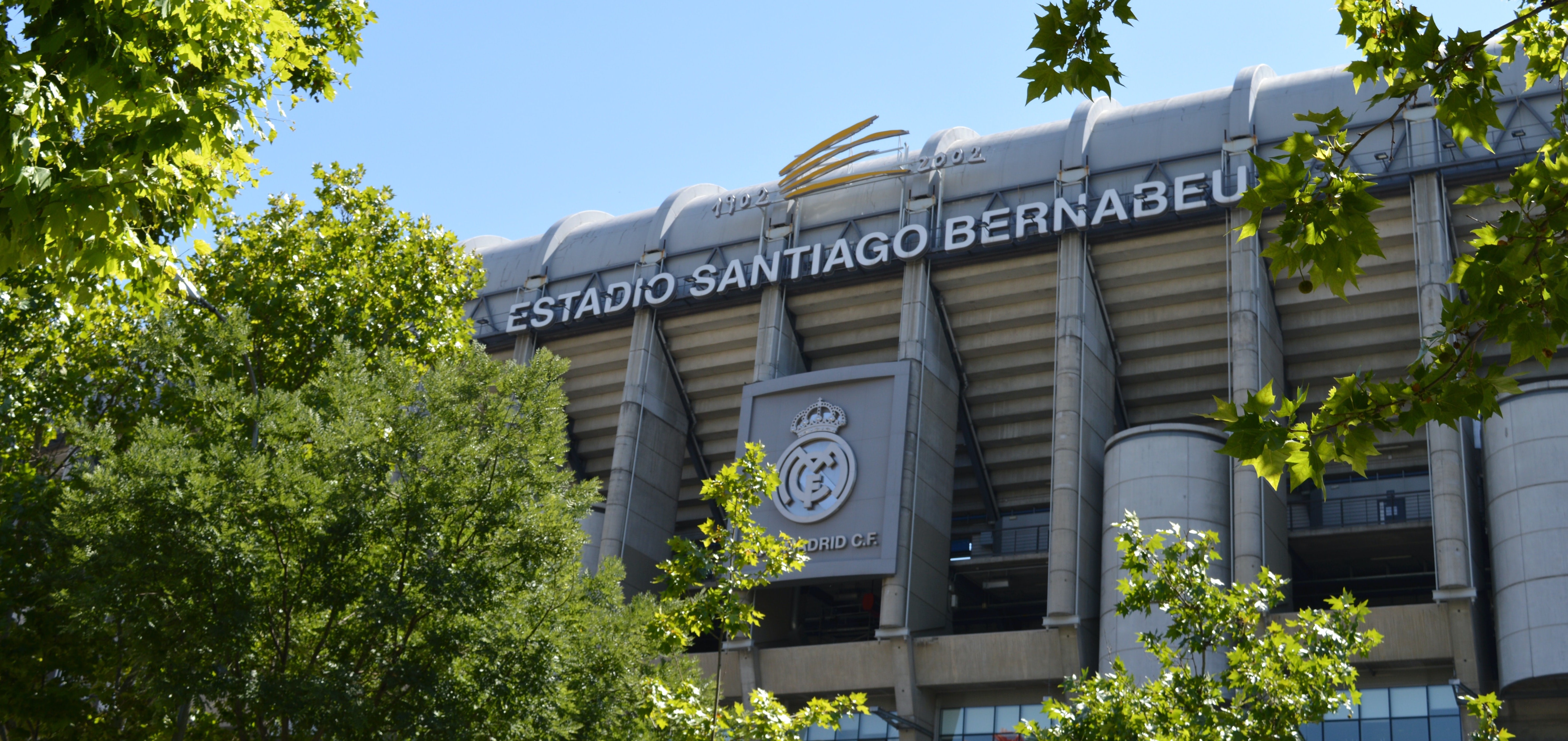
“The stadium is the physical manifestation of the club,” says world-renowned architect Christopher Lee. “I’m a believer that the architecture is site-specific, and that's not just the physical location but the culture, the societal overlays. I think that if you could pick up a stadium and relocate it to another city and that feels right, then you've got the wrong design.”
Having designed over 30 stadia across five continents, Lee has extensive experience in the art of transferring the history and perception of a club or national team to its new home. Arguably Lee’s greatest work to date was his role as project director in global architectural firm Populous’ creation of Tottenham Hotspur’s new stadium. Work with the north London-based club began in 2014 following a review of the previous stadium plans with Tottenham chairman Daniel Levy. With the “identikit” designs scrapped, Lee undertook the difficult task of designing a new stadium with the history of this traditional 140-year-old club and its local community woven into the building.
A new era for Tottenham
Built on the site of the previous stadium, White Hart Lane, the new building is unique to top-level English football clubs with its location being on a high street. Informed by the idea of urban integrity, Lee had to ensure the shiny, modern façade fitted in with the Georgian and early Victorian architecture seen on Tottenham High Road.
To alleviate this stark contrast, a multi-texture design was implemented which rises and falls depending on the levels and lines of the street’s existing buildings. As the fans are proud of their local community, this allowed the foundational principles of the Tottenham brand (place and history) to be kept intact.
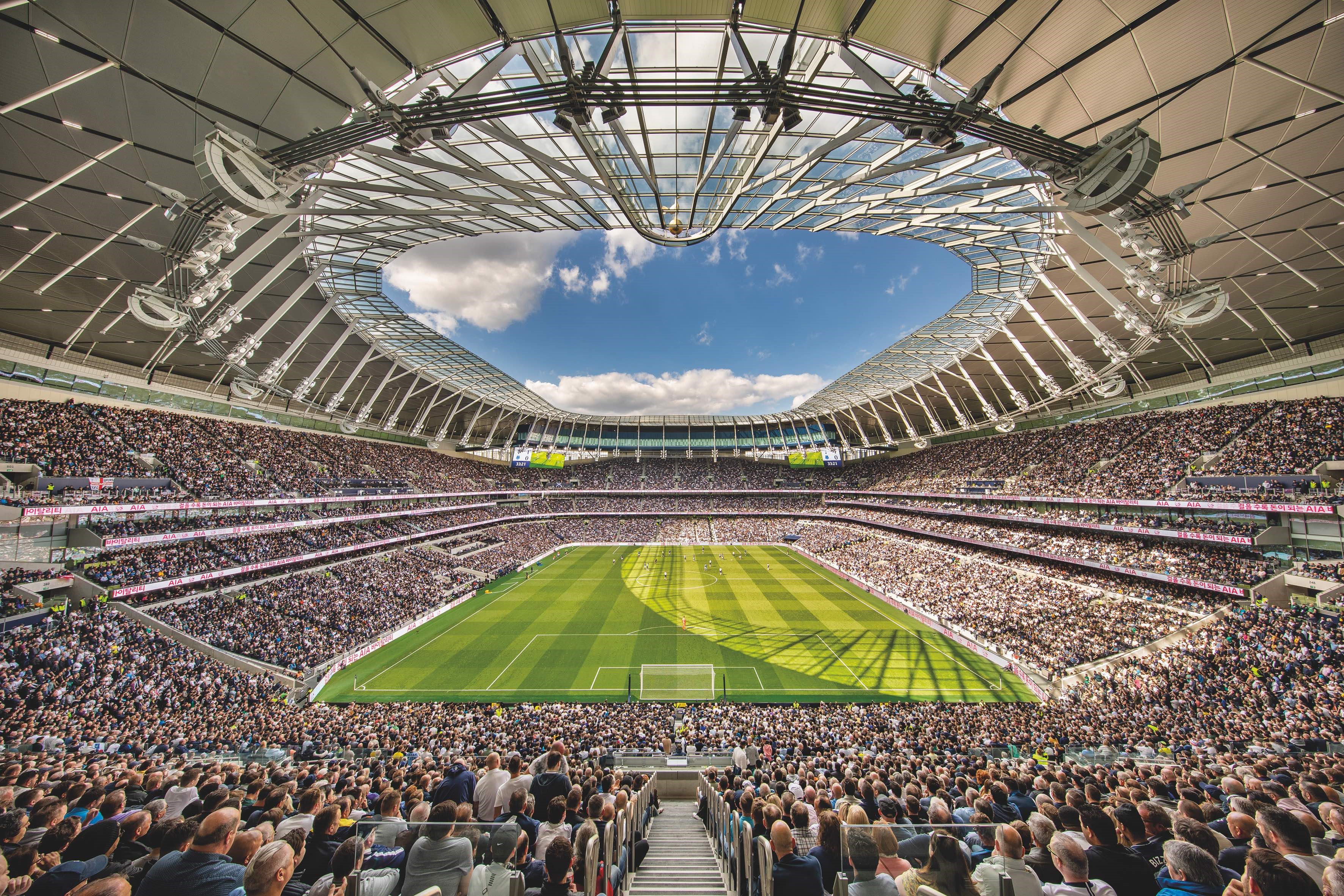
Lee, who visited the old stadium many times before its demolition in 2017, found himself taken in by the “phenomenal” atmosphere, and less impressed with the “dreadful” facilities. It was these observations which led Populous to inculcate the spirit of White Hart Lane into the new stadium, as opposed to embedding its literal designs. For instance, the loudness of fans on matchday – so key to the Tottenham brand – was replicated through the creation of the 17,500-capacity single-tier South Stand. Pairing the positioning of the club’s loudest and most passionate fans with a clever roofing design that enhances acoustics, the South Stand essentially acts as a megaphone to create an intimidating, lively matchday atmosphere.
Lee says, “I think this is really the first time we've ever built a stadium and thought of the seating bowl the same way we would for our music arenas or theatres. It’s very much designed so the reverberation times are quick. There's not lots of deep overhangs so the noise doesn't always bounce around on the tiers, and the roof lining is tuned like we would a concert hall.”
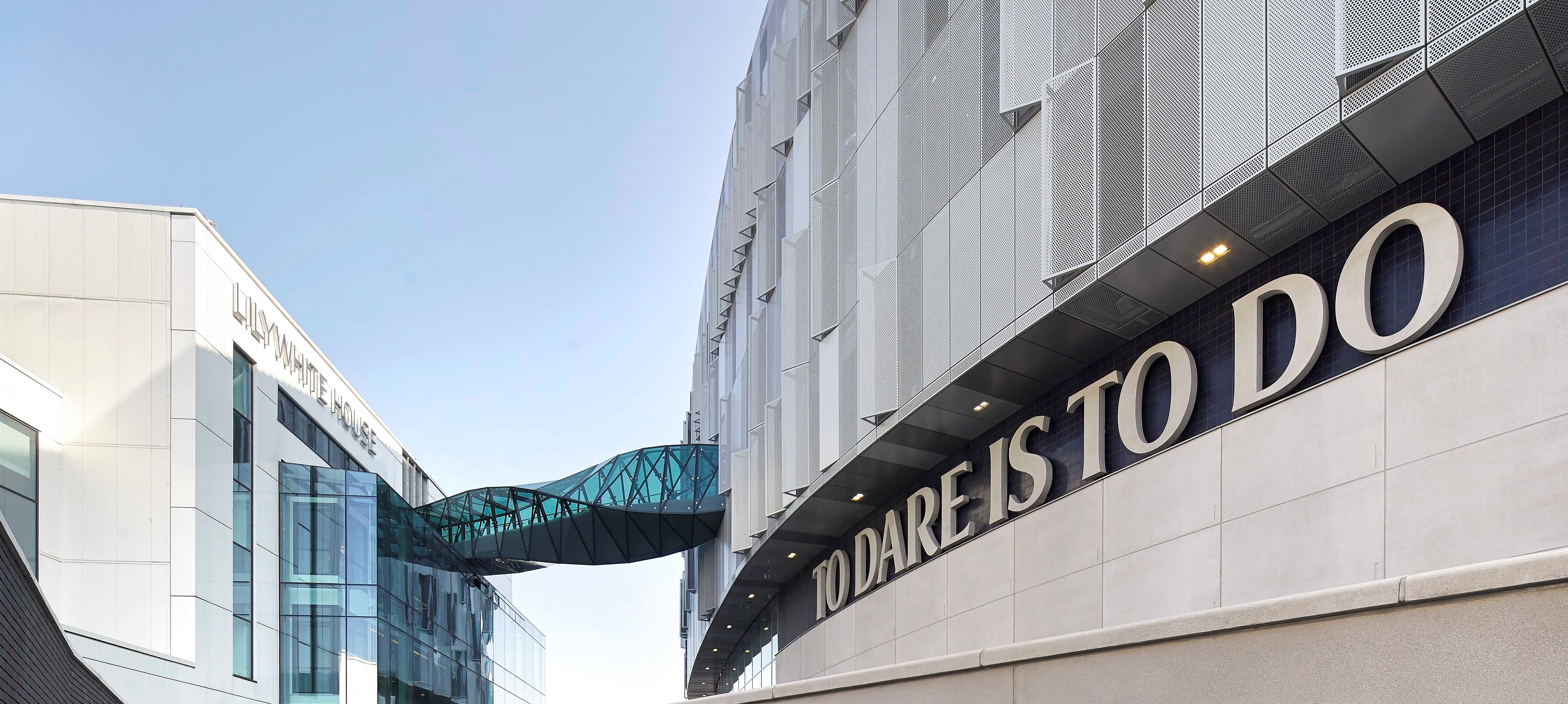
More traditional examples of branding can be found throughout the 62,850-capacity stadium, however, such as the huge concrete letters – each weighing a tonne – attached to the façade on the North Stand which bear the club’s motto, ‘To dare is to do’. Elsewhere, the variable wayfinding system utilises LED technology to keep the crowd flowing with its ability to be updated for different events the stadium hosts such as Tottenham matches, the NFL and concerts.
The project has since won 22 awards, but it was the words of one Tottenham fan on opening night in 2019 that stuck with Lee. He explains, “I was in the directors’ box talking to a guy who had been going to White Hart Lane for 50 years. He said, ‘It's like coming home, isn't it?’ That's exactly what we want someone to feel.”
The stadium was a hard-fought success. Lee estimates he and Levy visited over 100 stadia around the world to discover what the very best had in common. Surprisingly, the one which impacted the pair most was not a football stadium, but the NFL’s AT&T Stadium. Host to Texan franchise the Dallas Cowboys, the arena exhibits a subtle yet effective brand positioning which Levy duly noted. Just 300km south, however, a new rival sport brand was brewing in the city of Austin which, unlike the Tottenham Hotspur Stadium project, was unrestrained by a club’s longstanding traditions.
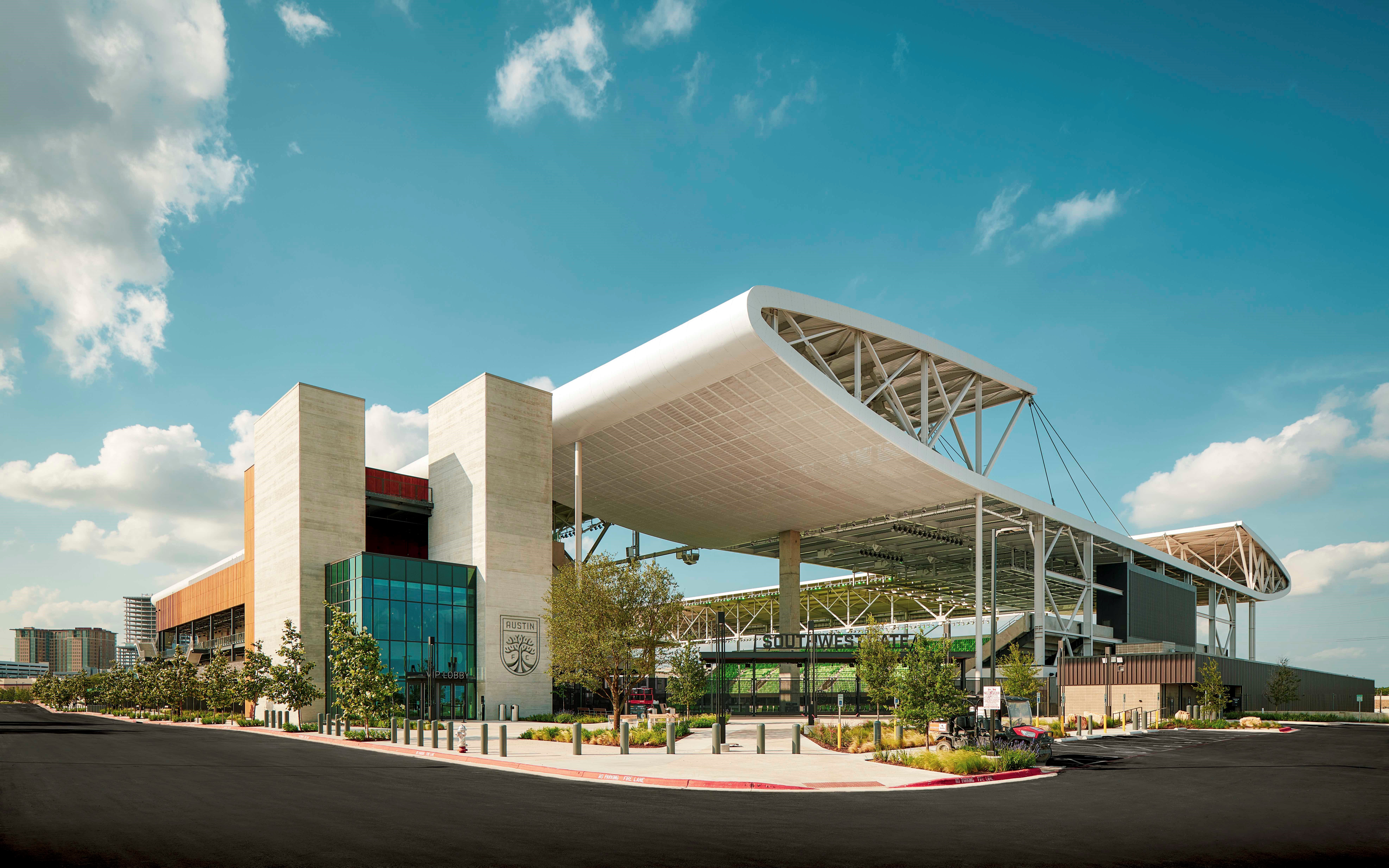
Ambitious Austin
Austin FC was founded in 2018 by investment group Two Oak Ventures on the premise that the Texas state capital was the greatest untapped major league sports market in North America. A year later, the club was admitted membership into Major League Soccer (MLS), the country’s top football division, meaning the newly formed club had to quickly find a coherent means of branding its badge, kit and stadium before making its MLS debut in April 2021.
Hiring Butler, a local brand development studio whose staff understood the city well, to create the visual identity was considered an important decision. Working closely with club president Andy Loughnane, the agency analysed the landscape of Texas sports teams, replete with colour palettes of red and blue, before moving in a wholly new direction. Nodding to the city’s Hispanic influence saw the creation of Bright Verde, a vibrant green, before the agency went one step further in its badge design by including two intertwined trees which referenced the Austin-famous Treaty Oak tale. While the agency could not draw on the history of the new club, it was instead informed by the city’s compelling culture.
Nowhere is this clearer than at Austin FC’s new home, Q2 Stadium. “We were very deliberate in designing a stadium that would uniquely represent Austin,” says Loughnane. “It’s a stadium that hopefully created a near perfect representation of the very best of Austin. You couldn't put it in Los Angeles or Phoenix or Chicago or Miami and expect the same outcome simply because our stadium was built with our market in mind.”
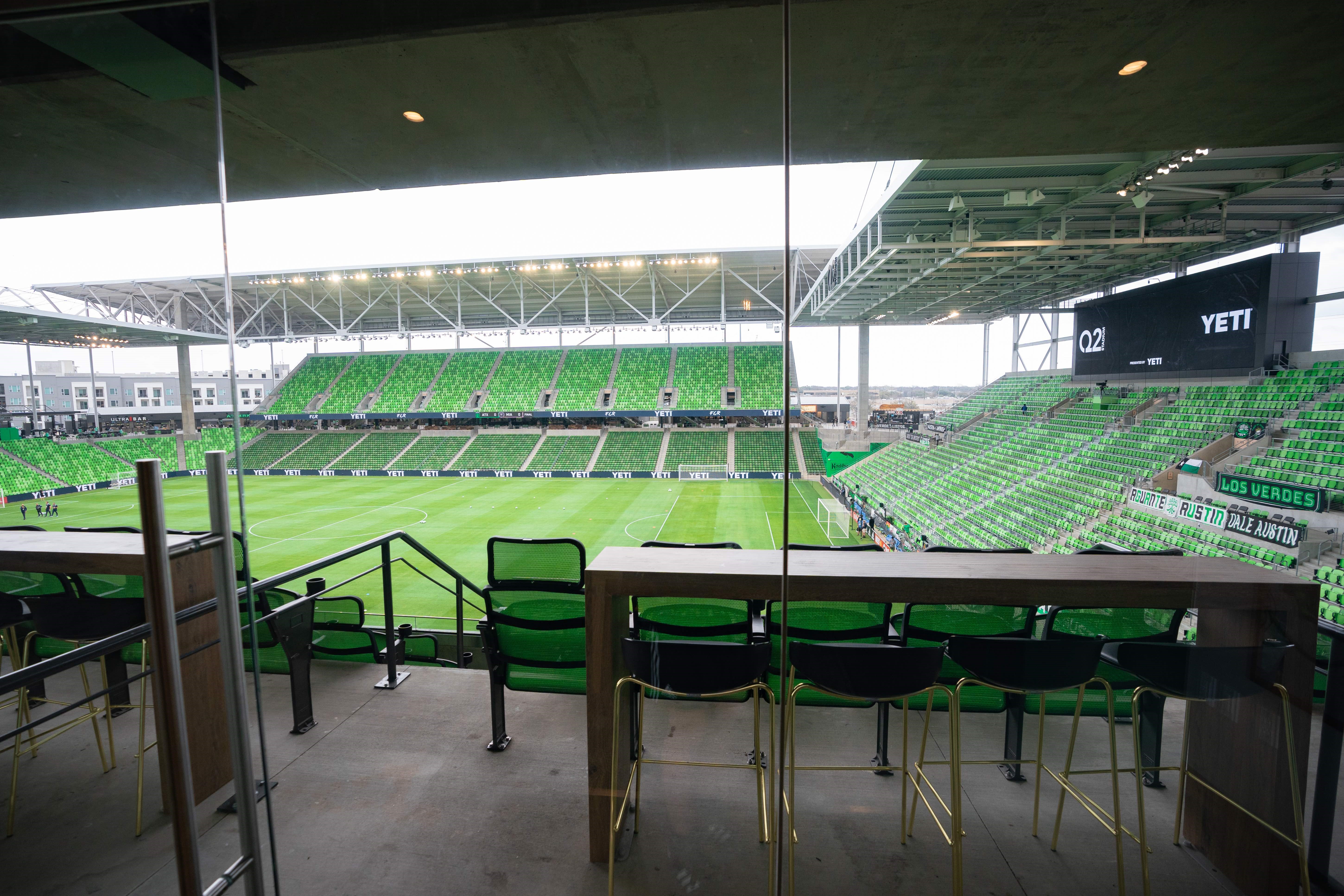
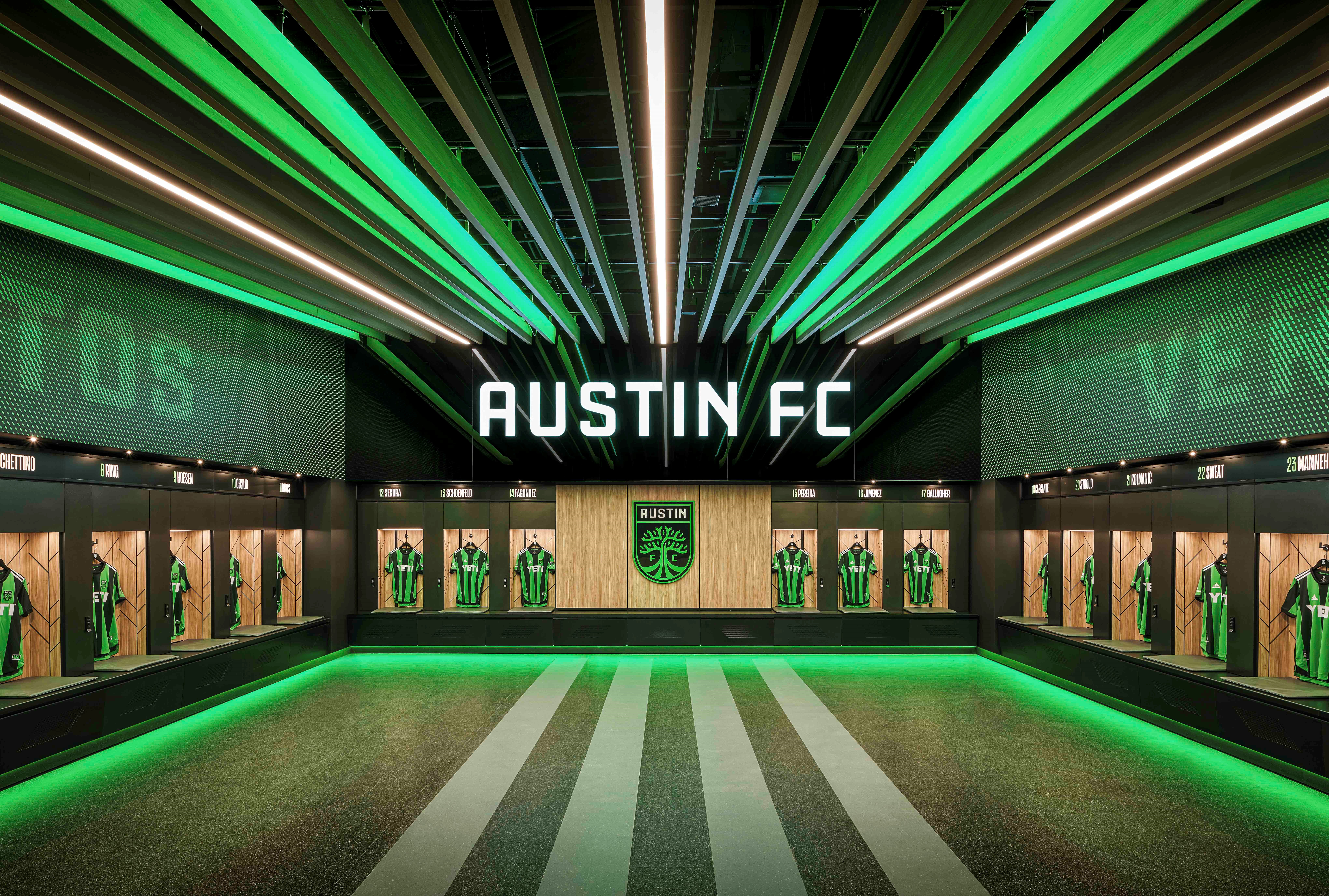
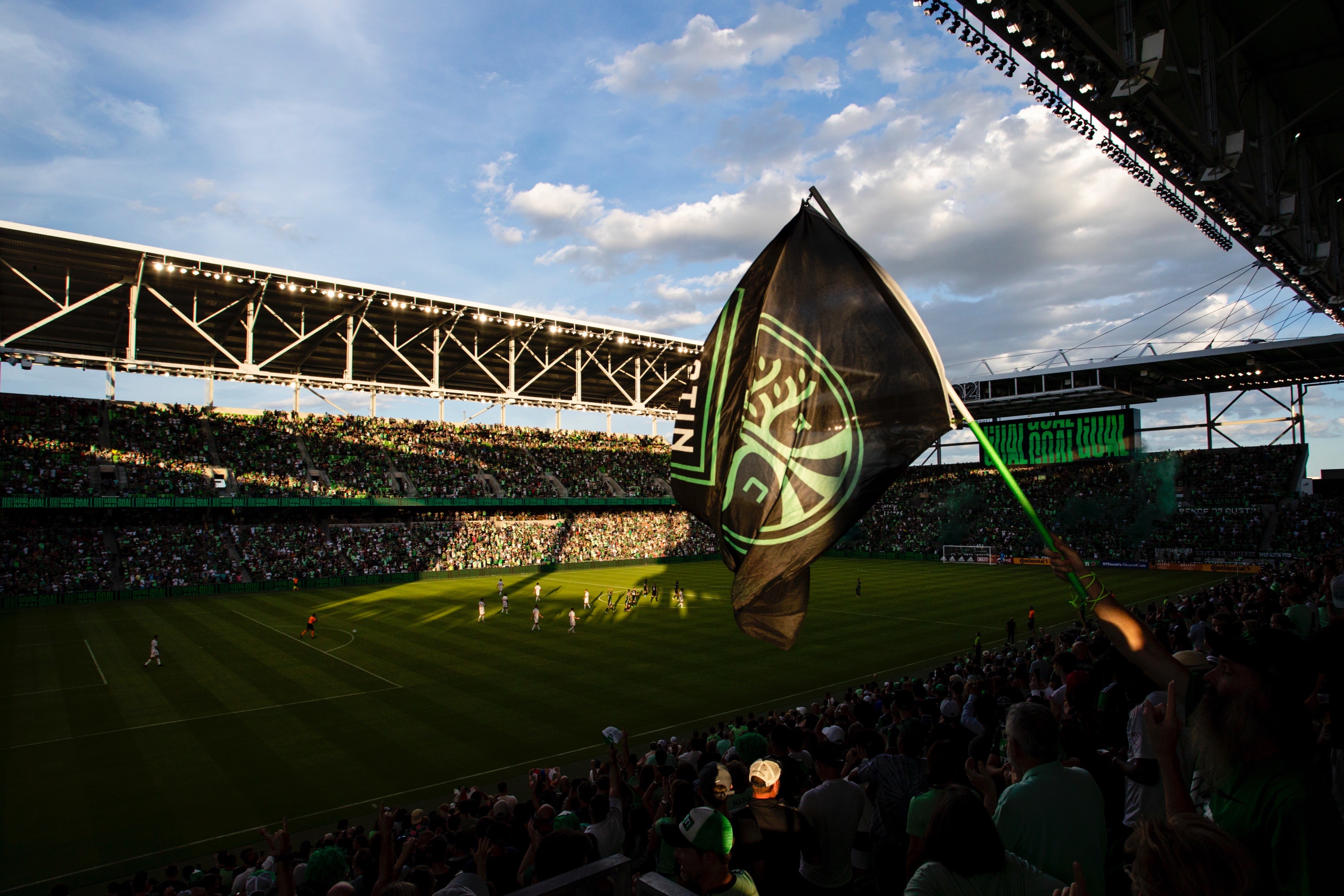
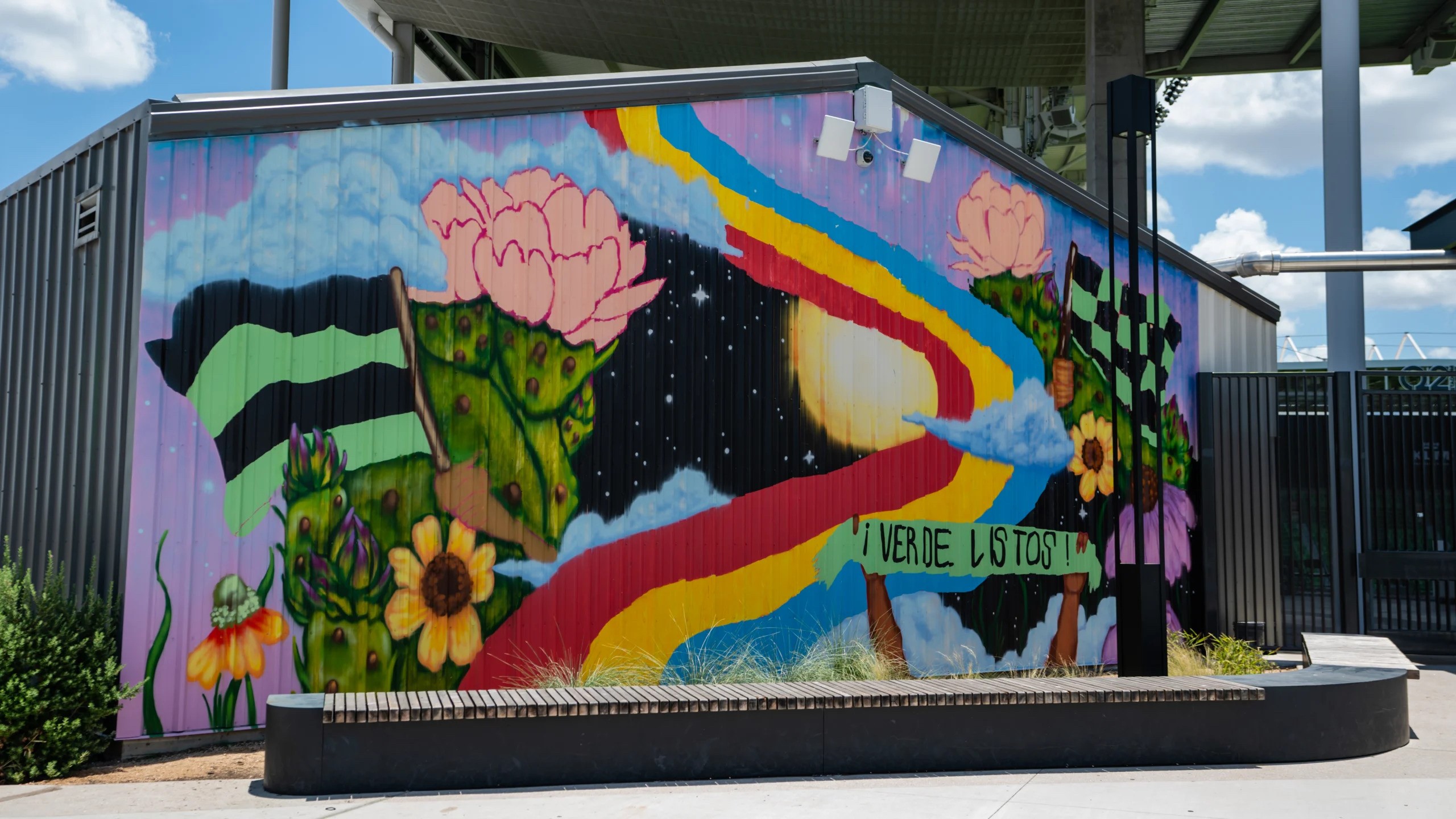
An ambitious, iconic roof design took up much of the $260 million stadium budget which allows fans to keep cool in the searing Texan heat. But much more than that, it was deliberately designed to amplify sound. Part of the curated Austin FC brand experience revolves around an intense matchday experience with passionate fans and an intimidating atmosphere, much like Tottenham Hotspur Stadium.
“I think the roof design itself is distinctive,” says Loughnane. “It has this aeroplane wing look to it when you're able to see it from certain profile positions. I'm a big fan of that design and the fact it creates this incredible noise. Again, if you see a picture of the roof design, you now know that's Q2 Stadium and you can't say the same about other stadiums.”
Considerations of the city and its people can be found throughout the stadium from the use of mesh seats, which allow fans to cool down on hot days, to the wide array of Austin-famous barbecue and taco food offered on matchdays. Homage is also paid to the city’s creatives through the painting of murals on the stadium’s exterior walls by ATXFC Artist Initiative, a club-run programme which allows for the integration of artwork into the Q2 Stadium.
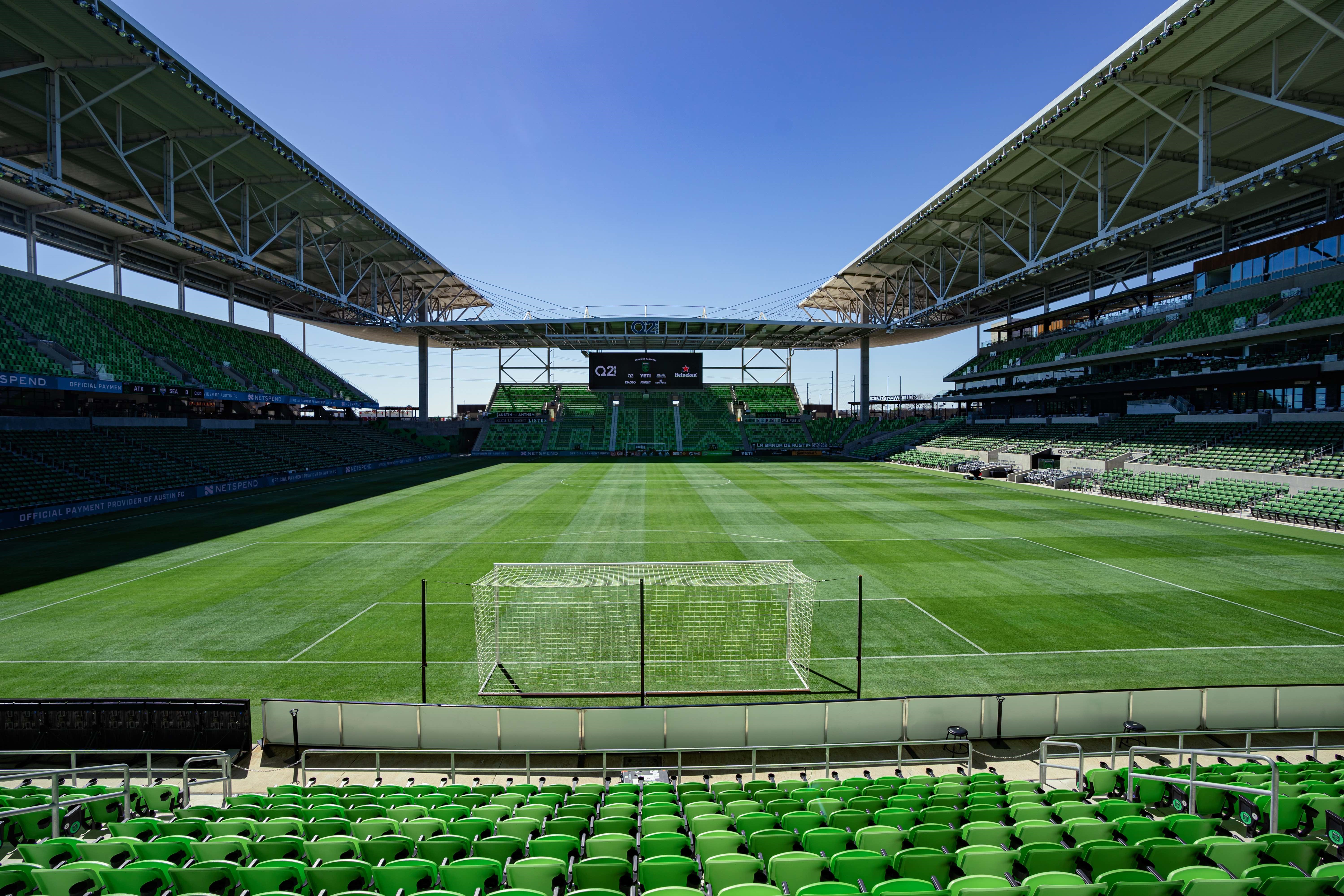
Qatar’s turn
The integration of culture and place into football stadium branding is a growing trend as the identikit stadium increasingly becomes a theme of the past. The eight stadia to feature in the upcoming Fifa World Cup Qatar 2022, the largest sporting event ever held in the Middle East, were built with a conscious effort of showing off the heritage of the Arab state.
For instance, the design for Al Bayt Stadium, located in the northern city of Al Khor, was inspired by the bayt al sha’ar of nomadic people. The desert-dwellers were famed for the vibrant patterns and black stripes on their tents – features embedded in the ultra-modern stadium’s interior and façade design. Likewise, the roof design of Al Janoub Stadium alludes to the seafaring history of the coastal city of Al Wakrah with its flowing curves that resemble traditional dhow boats. The benchmark of combining architectural design and place branding has truly been set for the coming years.
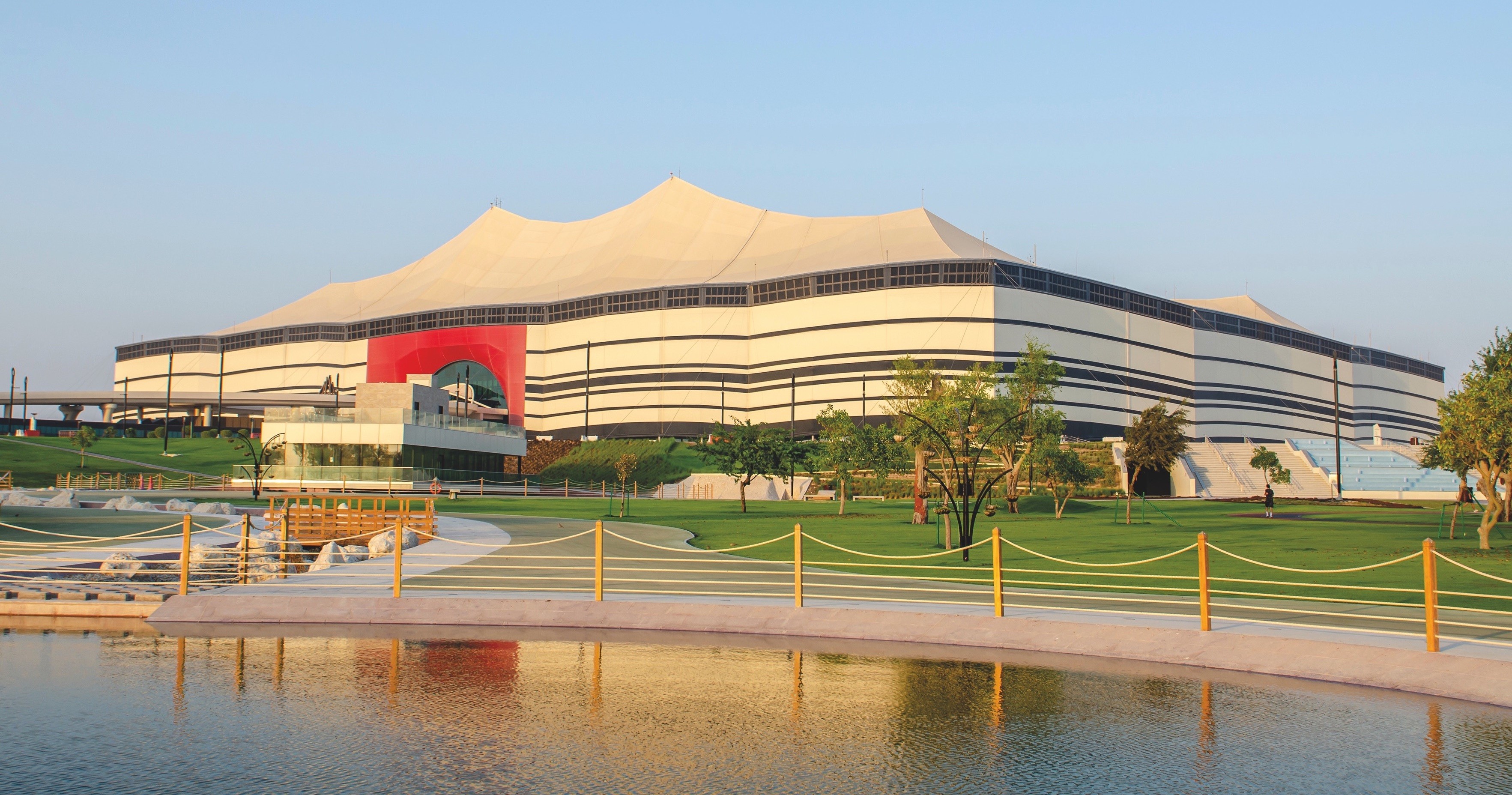
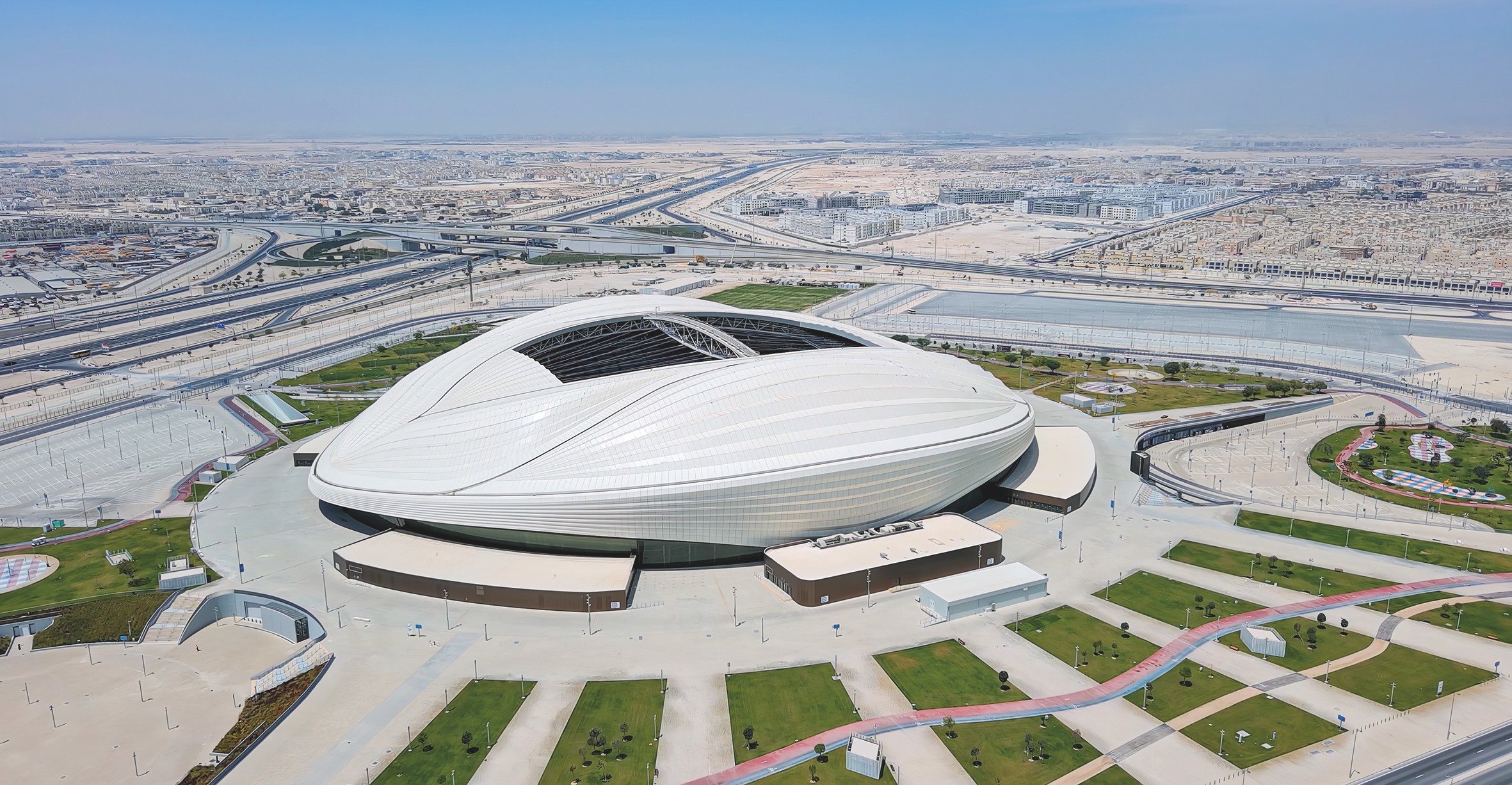
But it is the enormous, 80,000-capacity Lusail Stadium which will act as the centrepiece of the highly anticipated tournament. Located just 12 miles from Doha in the planned city of Lusail, the stadium design by British architectural firm Foster + Partners seeks to stun fans from around the world as they visit what has been dubbed ‘the city of the future’. While the stadium designs point to what is to come, they once again draw significant inspiration from culture and history to bring a deeper meaning to the Qatar World Cup brand.
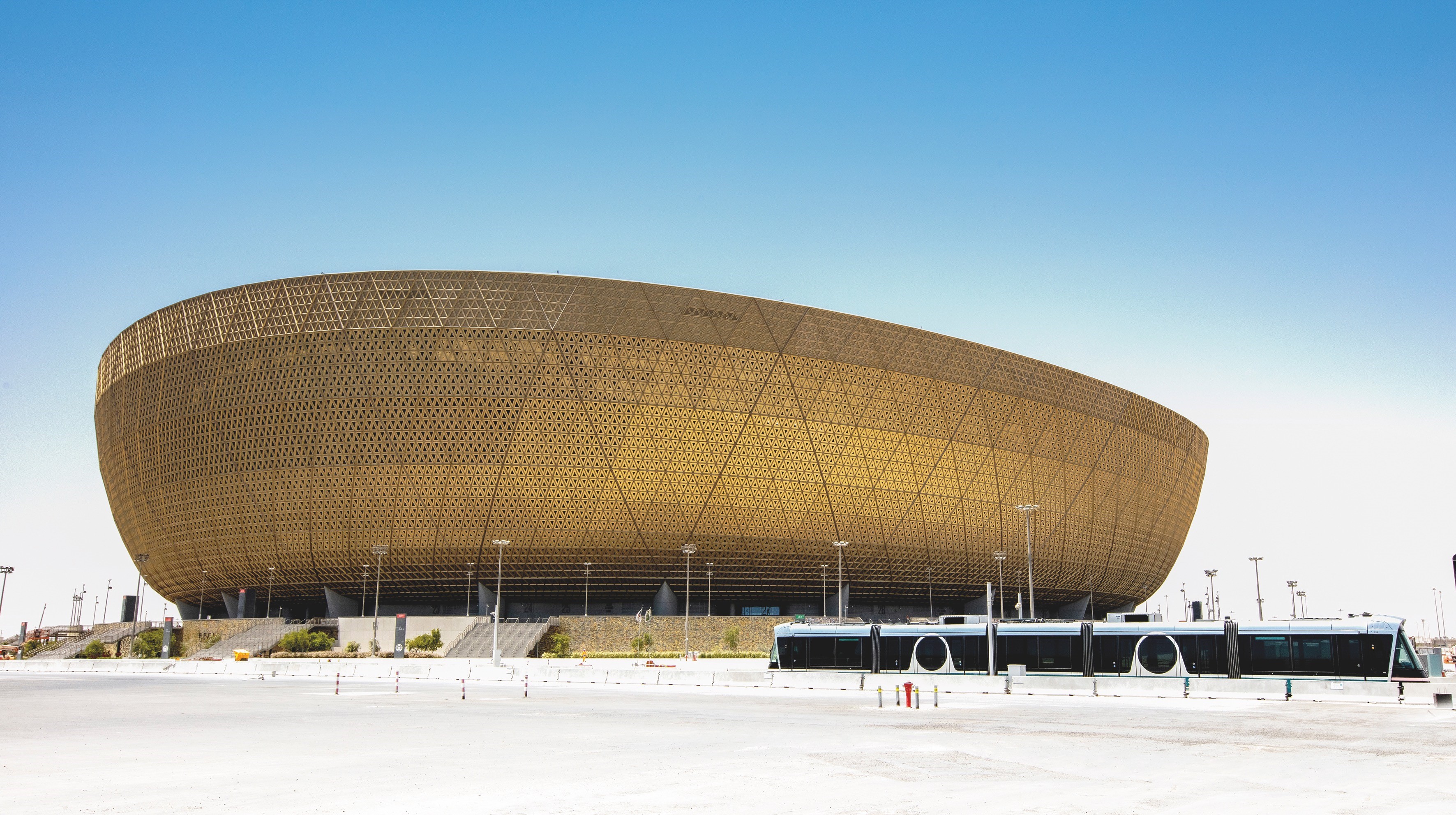
Guided by the nation’s Supreme Committee for Delivery & Legacy, Foster + Partners’ stadium design is informed by traditional Middle Eastern bowls, vessels and art pieces. The gold exterior, with its intriguing patterns, is based on the fanar lantern, celebrating Qatar’s ancient heritage of craftsmanship. Replicating the real thing, an advanced lighting system will glow up the stadium façade in the evening for fans attending the Lusail Stadium.
Come 20 November when the World Cup kicks off, it will be this new breed of stadia which inspires that deep-rooted sense of awe for the next generation of football-lovers. While the focus will be on the stars of the footballing world that light up matches, and the colourful crowds that have journeyed from 32 nations, we shouldn’t forget the part intelligent branding has had to play in this most mighty of world celebrations.












